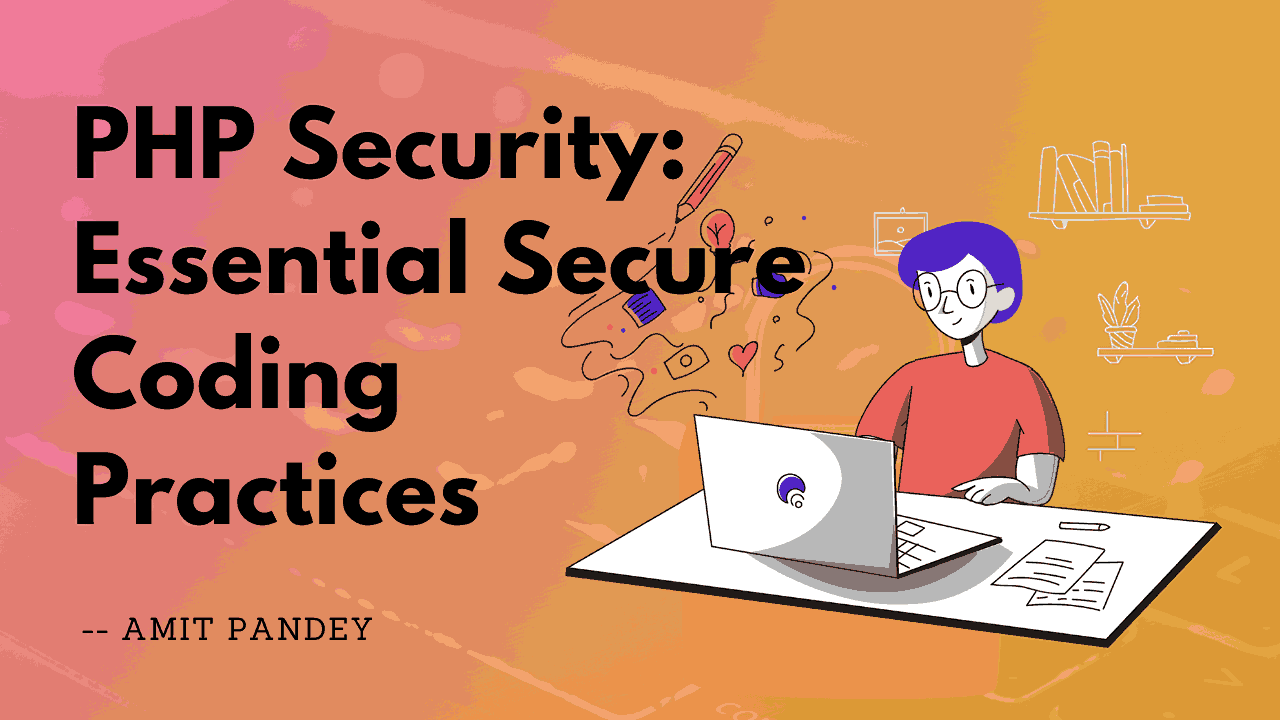In the realm of web development, PHP stands as one of the most widely used programming languages, powering numerous dynamic websites and web applications. However, with great popularity comes great responsibility, particularly in terms of security.
In this article, we'll delve into essential secure coding practices in PHP to fortify your applications against common vulnerabilities like SQL injection, XSS attacks, and more.
Introduction
PHP, known for its simplicity and flexibility, facilitates the creation of dynamic web content. Yet, its open nature also renders it susceptible to security risks. By implementing robust security measures, developers can safeguard their PHP applications from potential threats.
Understanding PHP Security
PHP applications are vulnerable to various security threats, including:
- SQL injection
- Cross-Site Scripting (XSS)
- Cross-Site Request Forgery (CSRF)
- File inclusion vulnerabilities
Understanding these risks is paramount for developers to effectively mitigate them.
Input Validation and Sanitization
Input validation involves verifying user input to ensure it conforms to expected formats and ranges. Sanitization, on the other hand, involves removing or encoding potentially harmful characters from input data.
Example: When validating a user's email address, use PHP's filter_var() function with the FILTER_VALIDATE_EMAIL filter.
SQL Injection Prevention
SQL injection occurs when malicious SQL queries are injected into input fields, leading to unauthorized access to databases. To prevent this, developers should use parameterized queries or prepared statements.
Example: Instead of concatenating user input directly into SQL queries, utilize prepared statements with placeholders.
Cross-Site Scripting (XSS) Mitigation
XSS attacks involve injecting malicious scripts into web pages viewed by other users. To mitigate XSS vulnerabilities, developers should properly escape user input and implement Content Security Policy (CSP) headers.
Example: Encode user input using htmlspecialchars() before displaying it on web pages.
Session Management and CSRF Protection
Secure session management is crucial for maintaining user authentication and preventing unauthorized access. Implementing CSRF tokens helps protect against CSRF attacks by validating the origin of requests.
Example: Generate unique CSRF tokens for each session and verify them before processing form submissions.
Secure File Handling
Improper file handling can lead to security breaches, such as arbitrary file uploads or directory traversal attacks. Developers should restrict file permissions, validate file types, and sanitize file names to prevent such exploits.
Example: Limit file upload sizes and restrict file types to prevent malicious uploads.
Pros and Cons of Secure Coding Practices in PHP
Pros:
Enhanced application security
Example: By implementing input validation and sanitization, developers can prevent SQL injection and XSS attacks, significantly reducing the risk of unauthorized access to sensitive data.
Reduced risk of data breaches
Example: Secure session management and CSRF protection mechanisms help prevent unauthorized access to user sessions, minimizing the risk of data breaches and maintaining user privacy.
Increased user trust and confidence
Example: When users perceive an application to be secure, they are more likely to trust it with their personal information, leading to increased user engagement and loyalty.
Cons:
Increased development time and complexity
Example: Implementing secure coding practices often requires additional time and effort during the development phase, as developers need to thoroughly test and validate their code to ensure its security.
Potential performance overhead
Example: Security measures such as input validation and sanitization may introduce performance overhead, especially in large-scale applications with high volumes of user input processing.
Stricter validation may lead to user inconvenience
Example: Implementing strict validation rules, such as complex password requirements, may inconvenience users and discourage them from using the application, impacting user experience.
FAQs (Frequently Asked Questions)
Q: What are the most common security vulnerabilities in PHP applications?
A: The most common vulnerabilities include SQL injection, XSS, CSRF, and file inclusion vulnerabilities.
Q: How does input validation help prevent SQL injection and XSS attacks?
A: Input validation ensures that user input adheres to expected formats, preventing the execution of malicious SQL queries or scripts.
Q: What is the role of prepared statements in SQL injection prevention?
A: Prepared statements separate SQL code from user input, eliminating the risk of SQL injection by treating input as data rather than executable code.
Q: How can developers implement secure session management in PHP?
A: Developers can implement secure session management by using HTTPS, generating secure session identifiers, and storing session data securely.
Q: How do Content Security Policy (CSP) headers mitigate XSS attacks?
A: CSP headers define a whitelist of approved sources for content, preventing the execution of unauthorized scripts in web pages.
Q: Is there a difference between sanitization and validation in PHP?
A: Yes, validation verifies the correctness of input data, while sanitization removes or encodes potentially harmful characters.
Q: How can developers stay updated on the latest PHP security best practices?
A: Developers can stay updated by regularly monitoring PHP security advisories, participating in security forums, and attending security conferences.
Conclusion
Securing PHP applications requires a proactive approach and adherence to best practices. By implementing robust security measures, developers can safeguard their applications against potential threats and ensure a safe user experience. Have more questions or insights to share? Leave a comment below!


Write a comment